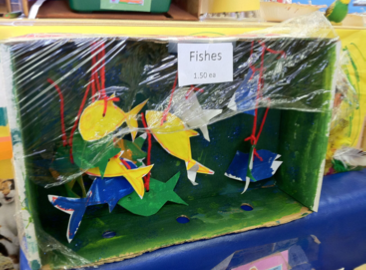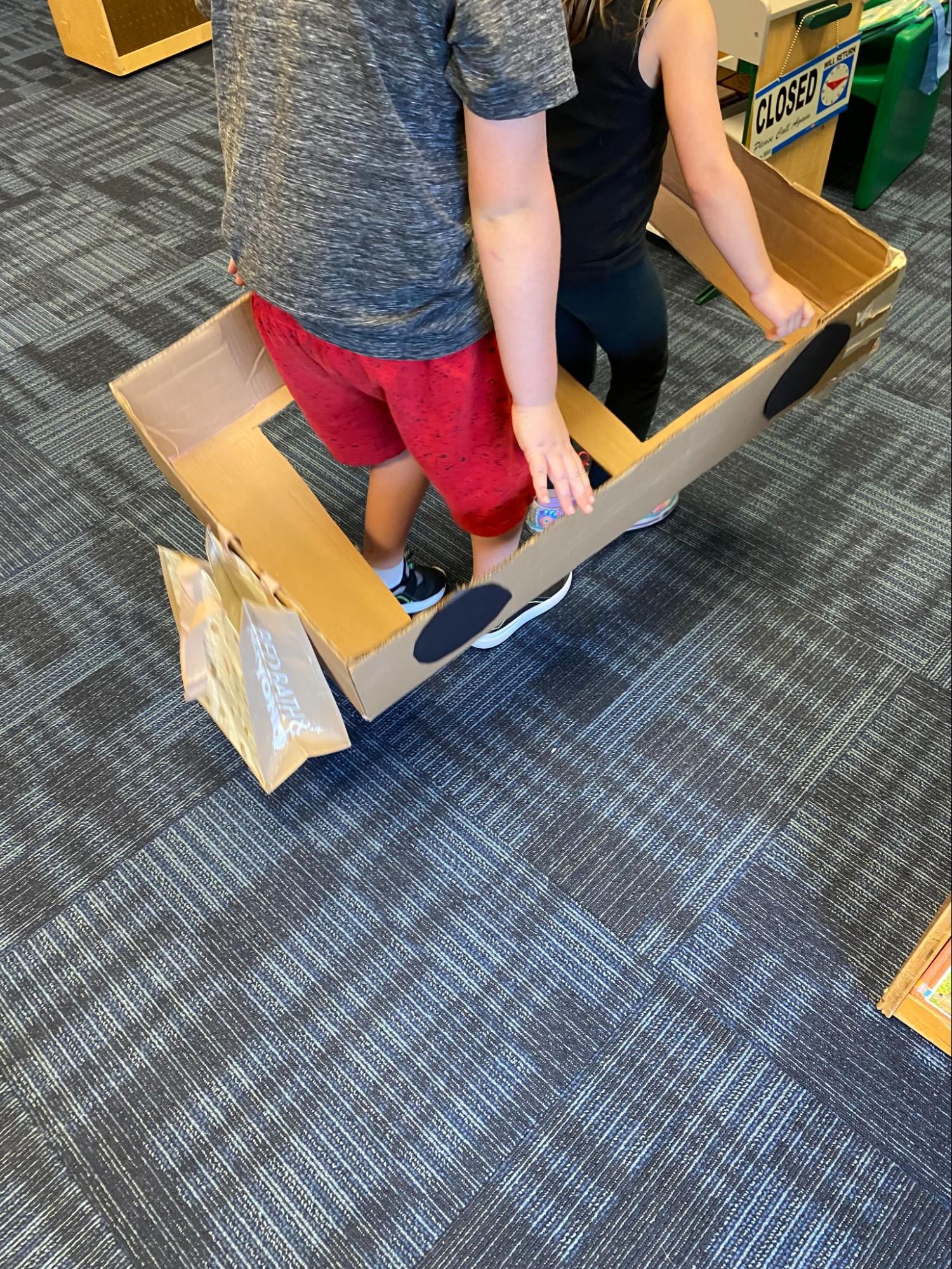Teachers, get ready to take your preschool art and play to the next level. Find out how prop making merges art and make-believe play. Discover the lasting benefits of this kind of learning. And get some actionable tips to start using prop making in your classroom.

What we heard from teachers and administration at after implementing Tools at
Start your classroom’s prop making journey today
.
Committee search to choose the right curriculum
Selection of Tools of the Mind curriculum & professional development
Tools training and implementation for all relevant staff
Teaching and learning review and outcomes
In a Tools classroom, anything is possible. With the imagination of children and the support of teachers, a cardboard box can become an ancient pyramid, a castle or a sushi bar. And it’s all through the wonderful world of prop making, where play merges with art. We wholeheartedly believe in the power of prop making, so much so that we want to share the message with Tools educators and far beyond.
Our co-founders Dr. Elena Bodrova and Dr. Deborah Leong and co-developer Barb Wilder-Smith shared the approach in a recent issue of Teaching Young Children, NAEYC’s award-winning magazine for preschool educators. The information contained in “Beyond the Art Center: How Prop Making Merges Art and Make-Believe Play,” is so actionable and valuable. And since this publication is only available to NAEYC members, we knew we had to share some highlights.
The authors start by painting a picture of a classroom where prop making is a way of life. The teacher, Ms. Ramona, uses open-ended questions to ask the children how they can turn their classroom into a pet store. The children chime in with ideas of things pets need, from food to toys. Then they start repurposing their everyday classroom objects and art supplies into pet store items. And the magic is just beginning. Here’s a peek at some direct excerpts from the article to get you started with prop making in your classroom:
This article explores how play—a leading activity in preschool where children develop crucial foundational skills—can be merged with art. Instead of art being a standalone activity, we share how you can make art a part of play by focusing on prop making. Props play an important role when children engage in make-believe play. Just as children use manipulatives for math, they need props to serve as tangible supports for their imagination. We describe how prop making can support make-believe play, what children can learn from prop making, where and when children can make props, and what materials they can use.
We focus on make-believe play (sometimes called pretend or dramatic play) because it has a profound effect on young children’s development. In make-believe play, children take on roles and play out multistep scenarios. They plan and remember a series of actions in a scenario and use more mature language in role speech. In make-believe play, young children are actively engaged with peers and are in control: it is the children—not an adult—who make decisions during play. This helps develop self-regulation skills, which are essential for later school and life success.

While educators and children may have experience using props during play, they may not be familiar with the art involved in making them. As children create a prop, they explore different types of art materials—found objects (boxes, bubble wrap, paper towel tubes), natural objects (pebbles, sticks, leaves, shells), and traditional art materials (paper, markers, paint). Prop making gives children the opportunity to practice basic art skills, such as painting, drawing, cutting with scissors, and using glue. It encourages children to create three-dimensional as well as two-dimensional art as they use their imaginations to turn familiar objects into a prop. Each prop is the child’s own conception. Children should not be expected to reproduce a specific example or make a prop that looks exactly like the teacher’s.
• Prop making develops social and emotional skills. Typically, art projects are a solitary activity, but prop making in a group makes it a social experience. Group prop making promotes collaboration and social and emotional skills such as sharing, turn taking, asking for and receiving help, and expressing positive sentiments and appreciation. Children talk about what they’re making, why they’re making it, and how to use their props. They ask for and share tools and exchange ideas.
• Prop making builds background knowledge and vocabulary. By talking about the prop and what it is used for, teachers explain new vocabulary and introduce children to new concepts. In addition, vocabulary and background knowledge about a play theme deepen when children can talk about what props they need and why, using words like lizard, hamster, gerbil, litter boxes, nail clippers, dog tags, and more as they set up and maintain a pet store. As they decide to add new animals, children can research their habitats and diets, expanding their knowledge about different animals.
• Prop making elevates the level of make-believe play. Child-made props enhance the experience and quality of play by challenging children to think creatively to construct their play scenarios. Children will have already begun planning their play through prop making. When play begins, they remind one another what props are used for and which roles use the props, and they learn to construct new props as scenarios evolve. “The customer wants a toy for their pet fish–we need to make one!”

• Props can be made by an individual child or by a group of children. For example, a group-made mural with trees, birds, and butterflies can serve as a backdrop for a camping theme, or children can work together to paint a box that will become a delivery truck. Individual children can each make their own fish for a fish tank, or one child can add the numerals to a cash register.
• Child-made props are for shared use in the classroom and belong to the group, not to an individual child. Although the children who made the props will be active users of them, this important rule enables sharing. Instead of sending home this particular artwork, teachers can send families pictures of the props their children have made.
• What props represent can change. The same prop can represent something different depending on what children agree on.
NAEYC members can check out the full article in the Winter 2023 issue. Not a NAEYC member? We hope these highlights can get you off and running on your prop making journey. Or you can buy this issue here.
